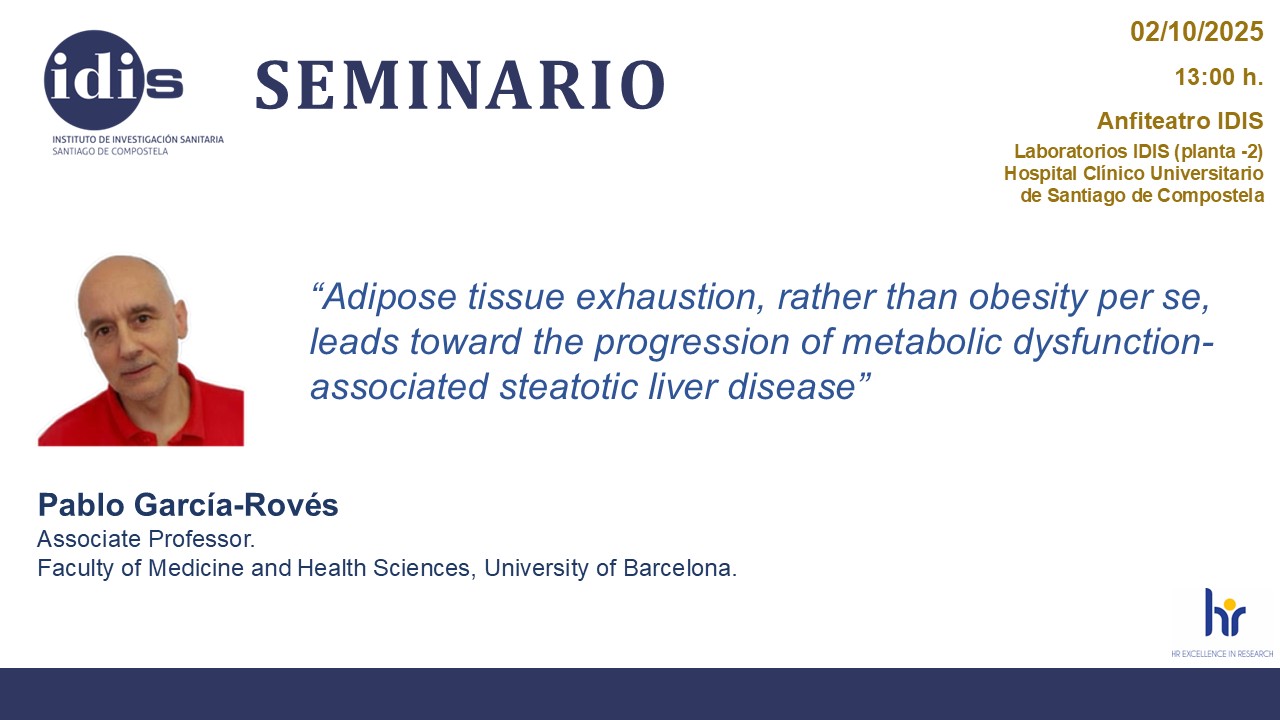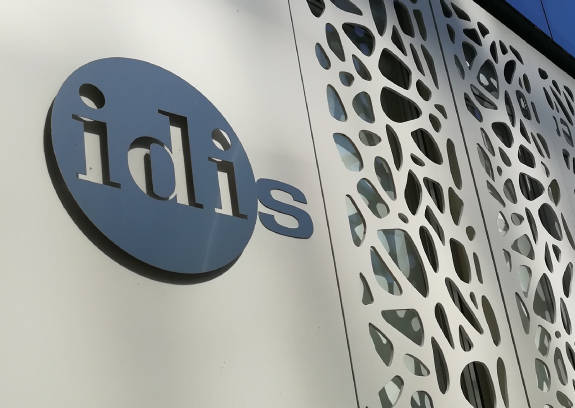

Seminario IDIS – Pablo García-Rovés
El próximo 2 de octubre recibimos la visita del profesor Pablo García-Rovés, que dará la charla titulada:
“Adipose tissue exhaustion, rather than obesity per se,
leads toward the progression of metabolic dysfunctionassociated steatotic liver disease”
One of the major concerns in health care is the growing prevalence of obesity due to its direct effect on the incidence of non-communicable diseases. Obesity-related T2D is a multi-organ disease from both pathology and etiology perspectives. Our LiMa project addresses metabolic plasticity in an animal model of obesity-related T2D. A multidisciplinary research framework combining integrative physiology, molecular biology, omics, bioinformatics, and complex network analyses has been established.
Two major findings form the basis of our current studies. First, obesity leaves a detrimental metabolic fingerprint in visceral adipose tissue (vWAT) despite successful restoration of a healthy phenotype through nutritional and exercise interventions. Second, a dual phenotypical response in vWAT is observed when animals are exposed to overfeeding, with some showing high adipose tissue mass and normal liver size, while others show reduced adipose mass and enlarged liver size, linked to liver pathology.
This highlights the loss of metabolic plasticity as a critical element in the vulnerability of vWAT during aging. During my presentation I will address: 1) the response of obese and formerly obese adipose tissue from an aging perspective, 2) the hypothesis of adipose tissue exhaustion as a driver of NAFLD progression, and 3) the dual phenotypical response between adipose and liver tissues.
Ubicación: Anfiteatro del IDIS.
Fecha: 2 de octubre, 13:00.
Cartel: pulsar aquí.

